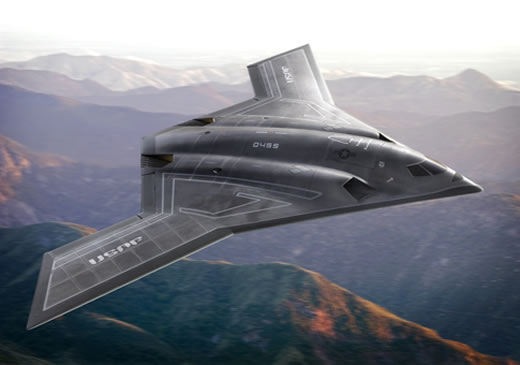


With a proven history of success, today’s bomber fleet has a reputation for excellence. It is, however, an aging fleet in need of a new addition, the deputy chief of staff operations, plans and requirements said during the 30th Annual Air Force Association Air Warfare Symposium and Technology Exposition Feb. 20, in Orlando, Florida.
Throughout history, bombers have played an integral role in major conflicts and rose to the challenge of new threats, said Lt. Gen. Burton Field, deputy chief of staff for operations, at the Headquarters of the U.S. Air Force.
Major campaigns have been well documented, crediting their capabilities as both bombers and hostile act deterrents. As the technological climate of war advances, the new long-range strike bomber will need the capability to combat these new threats.
“Because of what (bombers) have done, they represent power, they represent potential … and they have a proven record of effectiveness in conflicts going back to War World II, and in every (conflict) until today,” Field said.
The LRS-B must continue the legacy by assisting with land, sea and even cyberspace warfare in the form of communications interception, said Dr. Rebecca Grant, the president of IRIS Independent Research, a small business that specializes in national security.
The bomber must be proficient in all theaters.
“We have a tremendously noble fleet that has performed beyond expectations in conflicts ranging from Iraq to Afghanistan,” Grant said. “(However,) we are already short for today’s current theater demands. Looking a little bit ahead, it’s clear we don’t have enough penetrating bombers for the threats and challenges of the 2020’s and beyond.”
Grant cited the U.S. has yet to face a modern surface to air, or SAM, missile threat with its current fleet and may not be adequately suited for combat against more advanced SAM sites. A new bomber would be up to the task of tomorrow’s combat environment and possibly replace some of the more dated aircraft, especially during a time when forces are being rebalanced.
“In (the mid 2020’s) … our armed forces will face challenges for which it was not designed,” Grant said, noting the way to mitigate that challenge is by beginning plans now.
The bomber fleet is important not only for its ability to get bombs on target, but as a show of force, Field said. He cited several examples of bombers used as deterrence, including flying B-26 Peacemakers over Russia in 1952 during a parade, a B-52 Stratofortress’ flight over China, and the more recent B-2 Spirit flight over North Korea.
The inventory goal for the new long-range strike bomber is 80-100 bombers by the mid 2020’s, Field said. Bombers must be able to reach deep behind enemy lines with sufficient numbers to to conduct operations across the depth of an entire theater simultaneously, the general continued.
The addition of a new bomber is paramount to maintaining this capability for tomorrow’s conflict.
“Bombers can send messages,” Field said. “They can influence or initiate action, and they are credible because of what they have done in the past.”
Written by: Senior Airman Zachary Vucic, First published by the Air Force News Service
Update: US Air Force Secretary Deborah Lee James announced Thursday (February 27, 2014) that a formal Request for proposal (RFP) for the new bomber will be released in the fall of this year. The program will be one of the Air Forces’ top acquisition priorities for this decade, with fielding tentatively starting in the mid 2020.
















